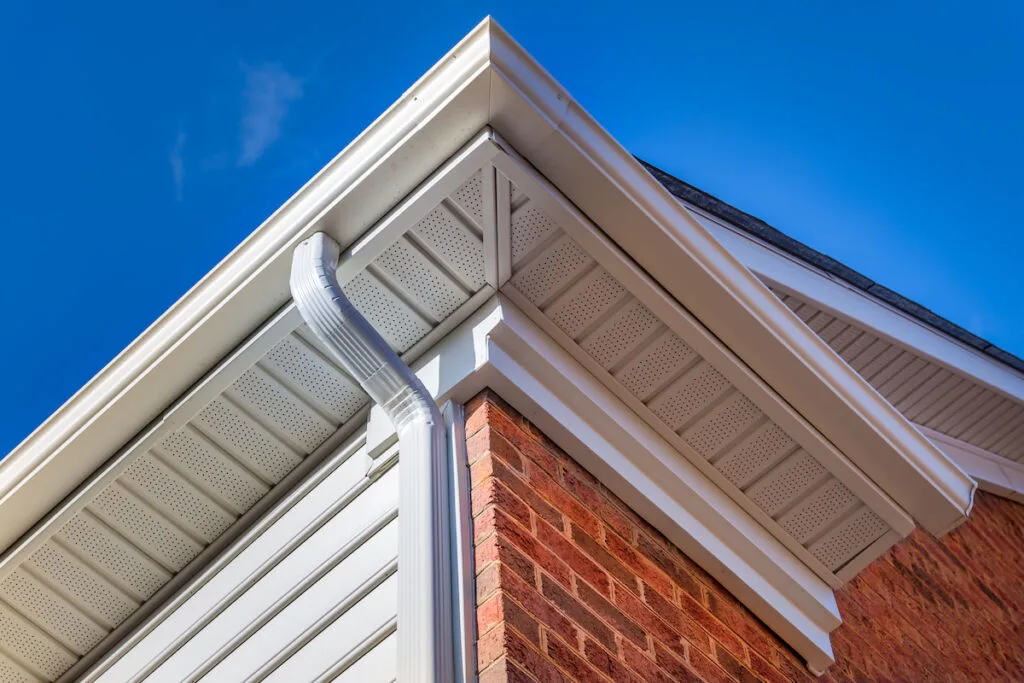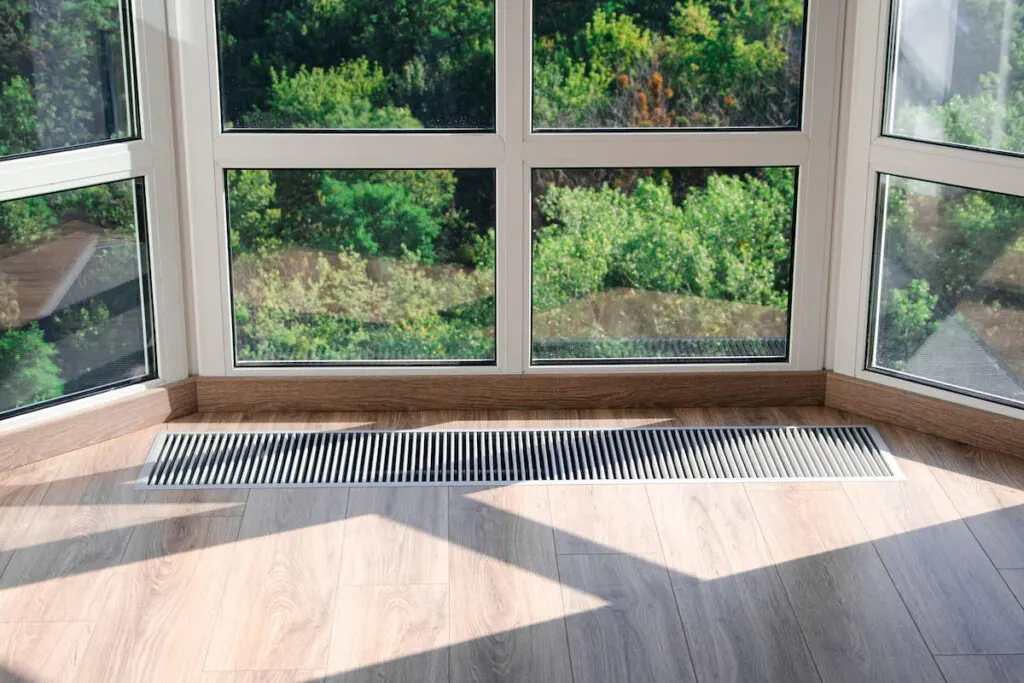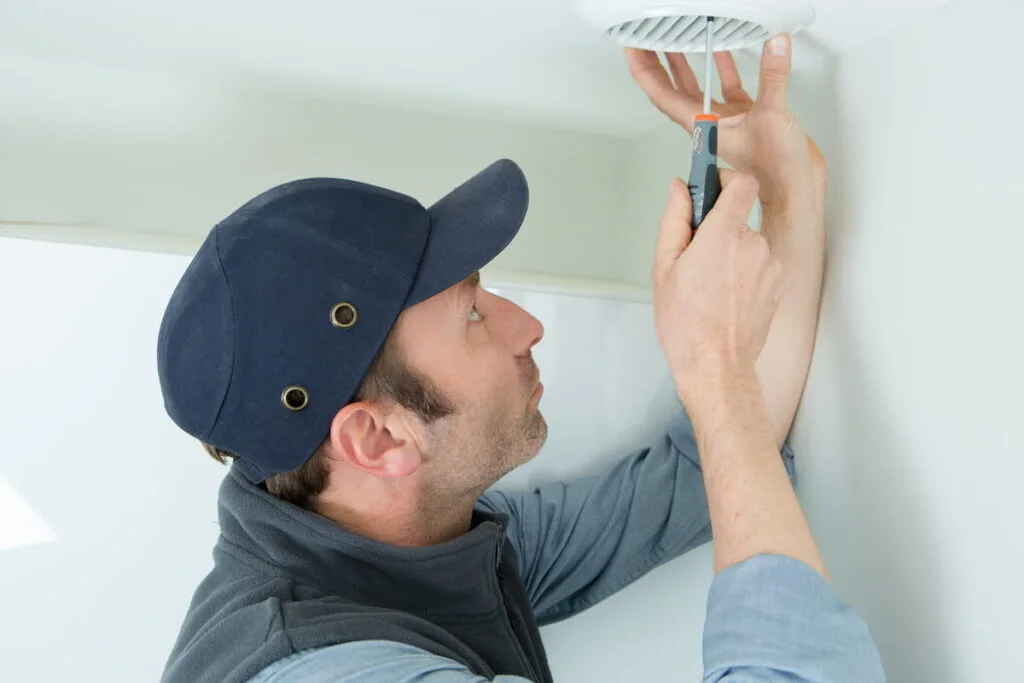*This post may have affiliate links, which means I may receive commissions if you choose to purchase through links I provide (at no extra cost to you). As an Amazon Associate, I earn from qualifying purchases. Please read my disclaimer for additional details.
Good ventilation is a priority everywhere in your house, but it’s a priority in your bathroom. It’s especially easy for things to get musty in bathrooms, because of the water used in a small space.
Without proper ventilation, you’ll start noticing foul smells and will likely have to deal with mold problems on tile and drywall.
Bathroom fans without ventilation will only move the same air around the room. You need to ventilate the fan to give the air somewhere to escape.
Ideally, you’ll completely move the humid air out of the bathroom and your house. The best exhaust fan vents have a direct line outdoors.

If your bathroom has a window, it’s easy to vent the exhaust fan through the wall. Most bathroom fans have vents that go straight from the fan, through the ceiling, and to the wall. If not, you can vent the fan via soffit vents.
Table of Contents
4 Ways to Vent Your Bathroom Exhaust Fan
The good news is that you have options. You can customize your bathroom fan exhaust vent based on your home’s layout and what’s inside your walls.
Here are four of the best options currently available for venting.

Indoor Venting
Depending on the size of your house and the position of your bathroom exhaust fan, you may get by with venting it indoors. This is music to the ears of homeowners with basement bathrooms and toilets in other non-traditional locations.
People frequently vent bathrooms into the attic, which allows the air to exit via gable vents in its own time.
This venting method is controversial, because some worry about moisture building in the attic. Some building codes advise against interior venting for this reason.
Internal venting is possible, but it should be reserved for bathrooms you don’t use often or situations in which it’s impossible to install an exterior vent.
Vent Through the Wall

This is the most common way to vent a bathroom exhaust fan because the vent has to travel the shortest distance and is usually the most effective. For new vents, you’ll likely need a power saw to cut out a wall section and a hammer to smash the pieces away after they are cut.
If you’re new to home improvement, this project is best left to a professional contractor.
Vent Through the Roof

If you don’t want to cut a new hole in your wall, you can also vent the bathroom fan through the roof. If one of your bathrooms is upstairs, this is relatively easy.
However, the further you are from the roof, the more challenging it will be to build the vent all the way up.
Roof vents are similar to wall vents, except you’ll likely need more ducting to traverse the longer distance.
The main drawback of venting through the roof is that it creates more seams for potential leaks.
In addition, water may get into the vent when it rains, unless the flashing, caulking, and other work is done correctly. Weather exposure usually means roof vents need more maintenance as well.
Venting Through Soffit

A soffit is the underside of the roof canopy, or the section that extends out beyond your exterior walls. Venting through the soffit is a great option for people who can’t or don’t want to cut a section out of their wall.
Imagine that your home’s exterior is made of expensive masonry products or siding. If you’re worried about having another hole in your walls, then lifting the ducts a couple of feet and feeding them down into the soffit is a good solution.
People like to vent through the soffit because it is also an effective way to conceal the location of the vent. People rarely look up to the soffit, so it’s not very noticeable. Soffit vents keep the exterior of your house clean without interruptions.
The only issue with soffit vents is that they’re close to the attic, and unless the ductwork is done well, it could push humid air into the attic.
Try to Keep Ducts Shorter
Whenever possible, minimizing the length of ducts is a good idea. The longer your ducts are, the greater chance there is of something going wrong.
You’d be surprised at what type of problems people experience with ducts. Animals can get inside, as well as dust, hair, dirt, and other debris.
Duct blockages can be a serious issue because of the hot and humid air that travels through the ducts. In addition, an occluded duct makes it harder for the moisture to pass through, promoting mold.
What’s worse, you can’t see far into your ducts, so it’s hard to know that you have a mold problem until it’s been festering for a long time.
If you can, keep the ducts short. Covering shorter distances is one of the main reasons why exterior bathroom exhaust vents are so popular. The hot air goes straight outside from the shower.

Floor Vents Are Possible
Floor vents aren’t very common because they present unique challenges to airflow. They are best suited for smaller bathrooms far from the roof and exterior walls.
Typically, small bathrooms run the air from the exhaust through a filter and back into the bathroom again. A floor vent is discreet and powerful enough to get the job done in these cases.
You only need to avoid venting the duct into the crawl space under your home. This would allow moisture to accumulate, and it could cause significant issues like unseen mold growth.
In addition, when there’s too much moisture in the crawl space, it can force the air up through the walls, which will cause more problems than it’s worth.

Work with a Professional
It’s good to know your venting options, but we always recommend talking to a professional contractor whenever you’re considering a complex renovation.
Even if you plan on installing the vent and ductwork yourself, getting a free estimate and a professional opinion never hurts. Talking to a contractor can help you avoid rookie mistakes, like running afoul of codes or causing unnecessary safety issues in your home.
